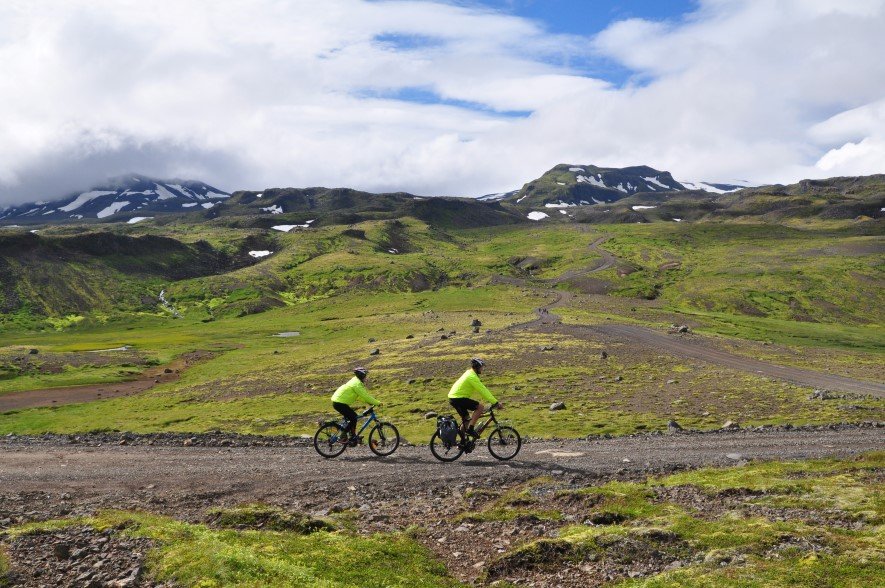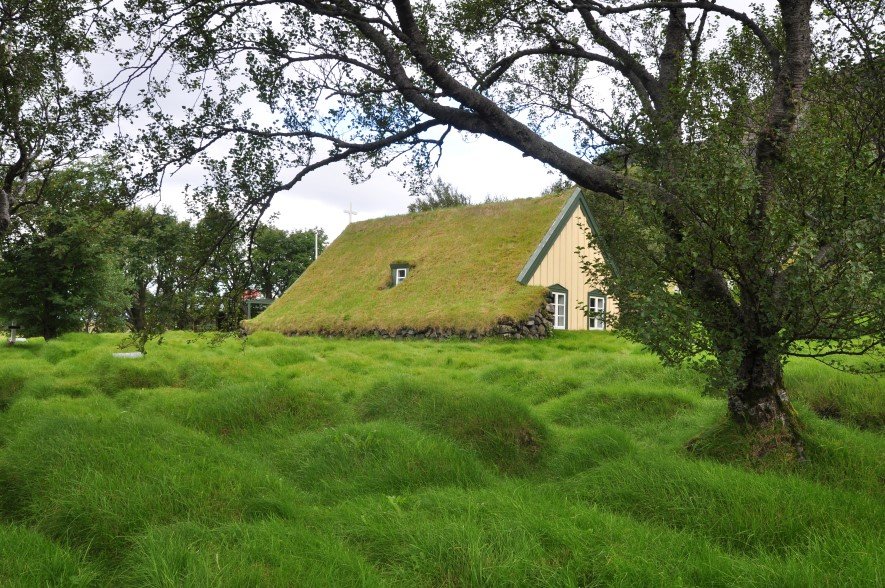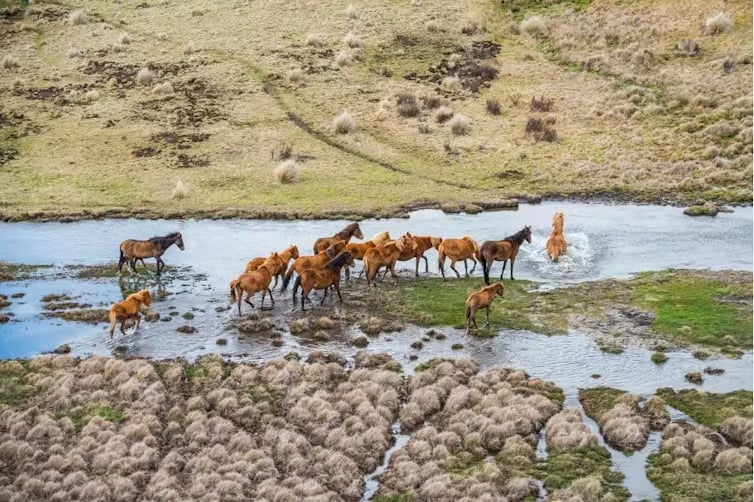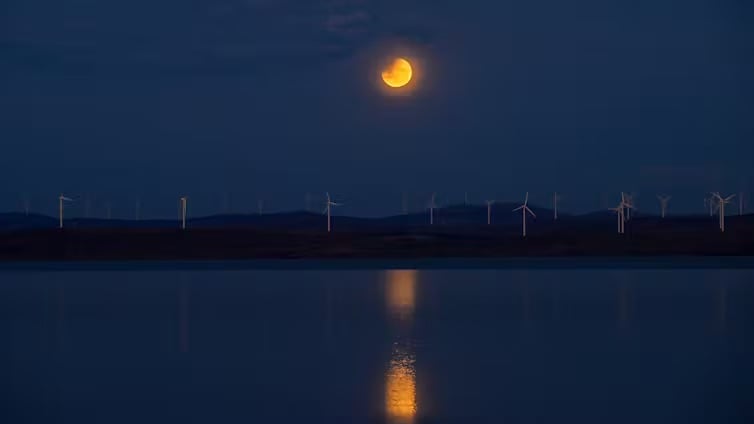The north country

THE FIRST THING we spot is the steam, drifting in pale swirls off the rocky green mountainside. It’s a heart-lifting sight.
At the foot of the mountain is an open field and a few farmhouses – all visible from our vantage point a kilometre or so away, atop the hill we’ve just crested. Our brows are slick with sweat and thighs burning from another long climb over loose, dusty gravel.
There is something about touring a country by bike that can’t be replicated by any other form of travel. It isn’t ‘doing’ a place, it is truly experiencing it. It’s what marriage is to dating – a shift beyond postcard perfection to an intimacy that will leave an indelible mark for life, for better or worse.
On a bike, there is no escaping to an air-conditioned metal cage that whips the scenery past your window in an indecipherable blur. Instead, the rain, wind and sunshine (often all in one day), the persistent midges and swooping Arctic terns, the curious sheep and horses, the sweet smell of wet crushed mosses underfoot, or the fug of a nearby sulphur spring – these are experienced not for the 15 minutes occasionally spent at a crowded lookout, but constantly, for weeks on end.

(Image: Paul Chilton)
With a whoop of excitement, we sit back on our saddles and roll down that day’s last hill to the evening’s campsite destination – picked out on the map for that most promising of symbols, the one representing a hot spring. For if there is one thing this geologically fledgling country has no shortage of, it is hot water – boiling up from deep down within the earth.
It is the ultimate salve at the end of a long day on a bike.
On your bike
A couple of months earlier, my husband Paul and I had quit our office jobs in Sydney and booked a five-week, independent bicycle tour around Iceland – as a kind of adventure stopover on our way to live in England.
Having never bicycle toured before, the idea of spending five weeks riding and camping around this subarctic island nation with exotic, unpronounceable names still seemed far-fetched – even as we handed over credit cards to pay for our touring bikes, and mooned over online images of the country’s famously dramatic landscape.
Yet here we were, pitching our tent on a farm in Iceland’s remote Westfjords region which, on a map, splays out like fingers to the northwest.

(Image: Gemma Chilton)
Sliding our tent pegs into the rich, spongy soil, carpeted with fragrant mosses and shrubs of edible, deep purple crowberries, we felt miniature before the immense scenery that surrounded us – waterfalls rushing down misty green mountainsides, cutting out abstract ice formations and running into long, narrow ocean inlets, carved out by ancient glacial erosion.
About a week earlier we had awoken in our rental accommodation in the capital city, Reykjavík – still jetlagged – at 4:30am, the midsummer sun already high in the sky and the air outside crisp and calm. Perfect.
Having nervously wobbled our way around a city car park the previous day – testing our ungainly bikes loaded with a combined total of 60kg – we were already comfortable riding with the extra weight by the time the traffic lights and suburbs of a still-sleeping Reykjavík gave way to wide-open farmland the following day.
That first day in Iceland alone took us over long, straight, flat roads, through open countryside dotted with volcanic rock formations, then into a narrow, protected mountain range, wheezing up and sailing down 15-degree inclines, before being spat out again at the southern end of Iceland’s biggest lakes, the clear blue 84km2 expanse of Thingvallavatn.
With the first hard-earned 70km under our belt, we drifted off to sleep in our tent that evening (in full daylight) saddle sore, but giddy with excitement and anticipation – having had our first tantalising taste of what the next five weeks might have in store.

(Image: Gemma Chilton)
Fire and ice
Iceland is a 130,000 square kilometre island nation (slightly bigger than Tasmania), perched between the North Atlantic and Arctic oceans. It has a relatively sparse population of around 320,000 – 80 per cent of which resides in Reykjavík, which also claims the title of northernmost capital city in the world.
In 2010, Iceland made its way into popular consciousness when Eyjafjallajökull erupted, spewing a plume of ash into the atmosphere and grinding international air traffic to a halt. However, while red-faced journalists stumbled over the volcano’s notoriously unpronounceable Icelandic name, life no doubt went on more or less as usual for the locals, for whom volcanic activity is nothing particularly novel.
While many visitors to Iceland do so only briefly – usually for a bus tour during a stopover between Europe and the USA – cycle touring is becoming increasingly popular. This is in part because the most common route, the main Ring Road – being mostly sealed and circumnavigating the country at a distance of 1332km – makes it easy to claim having ridden ‘around’ the whole country in a reasonably achievable timeframe, say two to three weeks.

(Image: Paul Chilton)
Our plans, however, quickly evolved to avoid the busy Ring Road and find alternative, quieter (and therefore often longer and slower) routes whenever feasible. These ‘side trips’ included riding part of the aforementioned Westfjords and also around Snæfellsnes peninsula.
Other than that, our generous five-week itinerary could have been summed up as ‘in a clockwise direction’ – the rest would be nutted out over unwieldy paper maps inside our little tent or in a cosy village kaffihús (coffee house).
Winds of change
Forget raising a licked finger – we could tell the direction of the wind by the unbroken sheets of rain lifting off the road ahead of us.
Free-wheeling in top gear, I had to suppress the strange urge to use the brakes to slow down – considering we were travelling on a flat, straight, sealed road. The trip computer was showing speeds of up to 50km/h, and we were averaging about 30km/h.
We were heading west along the south coast of Iceland, on the final leg of our five-week bike tour. By now, we had established a comfortable touring rhythm – two to three days of 50-60km rides, followed by a rest day (ideally coinciding with any forecast persistent rain and headwind, and spent in a town with a nice public hot tub or hot spring… obviously).

(Image: Paul Chilton)
Over the preceding weeks, we’d persevered up countless long hill climbs (and sped gleefully down the other side), gasped for breath past pungent fish-drying sheds, ridden to the edge of Snæfellsjökull glacier (made famous in Jules Verne’s 1864 sci-fi novel Journey to the Centre of the Earth), explored Iceland’s herring capital in the north, been rendered speechless before powerful waterfalls, become lost on barely existent overgrown farm roads and negotiated long, dark road tunnels cutting straight through ice-covered mountains.
Now, somewhere to our right – currently shrouded by familiar grey, swirling clouds – was Iceland’s largest glacier, Vatnajökull, which takes up eight per cent of the country’s total land area, and is larger than all the other glaciers in Europe combined. Along this stretch of road, she reaches down in icy tongues to sea level.
Our first destination that day was a place called Jökulsárlón (literally ‘glacier river lagoon’), where jagged icebergs drift out to sea. It was 23km from that morning’s campsite, and we’d covered the distance in just 45 minutes.
Rain sodden even through our wet-weather gear, our hearts sank a little when we arrived to find hordes of other tourists spewing out of buses – it was easy to tell we were getting closer to Reykjavík. We needed to stay warm, so we spent as long as we could in the rain watching playful seals and spotting shapes in the blue ice, but soon heeded the ever-present call of the road and returned to our bikes.
Perhaps we should have been warned of what was to come by the difficulty with which we left the glacier lagoon car park. Travelling perpendicular to the main road, we didn’t ride out of there but were pushed diagonally, skidding across the loose gravel until we could finally wrestle our bikes into the direction of the road and let the wind carry us on once more.

(Image: Gemma Chilton)
Our map showed a fuel station 40km away, which was to be our next stop, probably – we calculated to our disbelief – in well under two hours’ time at this rate. The plan was to seek shelter at the fuel station for lunch, before the final 25km to our planned campsite that afternoon, at a national park called Skaftafell.
We arrived to find the shop closed and empty, and a self-service fuel bowser at the roadside. Not much help to us, but there was another couple of bike tourers sheltering under the eaves of the shop, so we turned off to say hello. To our dismay, we learned these somewhat miserable French tourers had been travelling in the opposite direction to us – against this wind. As we farewelled our sorry comrades, I can’t imagine how they must have felt watching our figures shrink into the distance as we basically flew off, barely pedalling.
Soon the road changed direction slightly as we passed beneath Iceland’s tallest mountain, Hvannadalshnúkur (2110m). We were about to get a taste of what those French tourers had been through – our consistent tailwind suddenly mutated into a fluky windstorm. Gusts of up to 70km/h were now rushing down the mountainside and hitting us in savage, unpredictable bursts, sending our bikes veering wildly across the road. “I don’t like this!” I shouted to Paul over the roaring wind as we both squinted through the rain for a place to pull over safely.
There is an old Icelandic proverb: “kemst þó hægt fari”. It translates, roughly, to “you will reach your destination, even though you travel slowly”. Not only was it fitting for our experience touring Iceland – in the end, at an overall average speed of about 15km/h – it also speaks to the country’s rich history and culture of long arduous journeys through this often sparse and unforgiving landscape. For example, Icelandic people once measured distances in ‘boots’ – as in, the number worn through on a long journey. On this particular day, towards the end of our trip, we were in need of that ancient code protecting weary travellers more than ever.

(Image: Gemma Chilton)
After about three kilometres of being dragged dangerously all over the road by our seemingly possessed bikes, we spotted a turn-off sign with a bed and restaurant symbol. Change of plan: we weren’t going to make it to Skaftafell today. There was no sign of a place to camp here, but we’d already discussed – and were now experiencing – the kinds of conditions in which we might splash out on four-walled lodgings.
We had to adjust our demeanour as we entered the muted, sophisticated interior of the hotel lobby, our faces pink with windburn and our hi-vis clothes dripping onto the white-tiled floor. Having spent the past couple of hours (wait, weeks?) shouting at each other over the wind, it was also difficult to find an appropriate indoor volume.
“HI CAN WE PLEASE HAVE A ROOM HERE!”
Booked out. As was the next guesthouse in the village down the road (couldn’t they see our desperation?). It took three attempts before we found a small hostel that, while also booked out, let us camp for free on their grounds – perhaps realising we’d be pitching a tent somewhere in the vicinity regardless.
After a fitful sleep – our little tent buckling and warping disconcertingly in the wind and sheeting rain – we awoke to calm conditions and promising blue-sky gaps in the cloud cover.

(Image: Gemma Chilton)
We wandered through the eerily quiet village with its ancient turf-roofed chapel and expansive lowland surrounds, startled at the effect of the changed weather on our perception of the place.
A touch of misadventure
Nothing could spoil this day, we felt. It was to be the second last day on our bikes, before taking the bus back to Reykjavík the following afternoon – after 35 nights spent in a tent, and a distance of 1200km covered in a winding, convoluted line around Iceland (plus an extra couple of hundred kays with our mountain bikes strapped to the back of public buses).
We were on our way to a place called Thakgill, which had been recommended by the generous hostel manager who let us camp on her grounds during the windstorm a couple of days prior. The way she explained it, Thakgill sounded like a hidden paradise at the base of one of Vatnajökull’s glacial outlets.
It was only 20km to get there from the coastal town we were now in, called Vík – and while we’d been told the road there was unsealed and steep, we were feeling confident. We’d come such a long way, and we were up for anything! The sun was beating down from wide, clear skies – and we weren’t yet ready to acknowledge the sad reality that our Iceland adventure was drawing to an end.

(Image: Gemma Chilton)
We turned off the main road onto the track to Thakgill, rattling over the first couple of cattle grids then starting the gravelly climb inland. The sun was so unusually fierce that we stripped layers and applied sunscreen. The white peak of the glacier was clearly visible ahead, framed by blue sky in the distance, and the blue horizon shimmered behind us.
After about an hour riding, I pulled over when I saw Paul stopped ahead . “Didn’t you hear it?” he said. “It sounded like a gunshot!”
His tyre had burst.

(Image: Gemma Chilton)
Not to worry. We wheeled onto the grass and set to work replacing the inner-tube. However, the sidewall of the tyre had also split, and we found the replacement we’d been given by the hire company was just as worn out. (Yes, I know! Our fault. Chalk it up to experience, okay?)
We decided to compromise and fit the original tyre over the new tube, then ride carefully and hope for the best – besides, it looked mostly downhill from here.
After another 10 minutes, I commented in passing that my bike was making an unusual, repetitive sound. I thought perhaps a pannier strap had come loose and was flicking the wheel spokes, but couldn’t find where. I rode a little further, until the noise – khatoosh khatoosh with every pedal – became accompanied by a feeling of resistance. I checked again and spotted the source: an ugly bulge growing in the sidewall. This baby was about to burst as well! I let the tyre down to sagging pressure. We looked at each other, then up at the steep hill we’d just sailed down, thinking I was lucky it hadn’t burst on the descent.

(Image: Paul Chilton)
And that’s how our bike tour of Iceland finished. Sweating in unseasonable heat, each pushing 45kg of bike back up the hill, doubled over with effort, and tails between our legs. Our trusty steeds were like an elderly couple, passing away in quick succession one after the other, after a lifetime together.
We managed to ride/limp the weary old couple (the bikes that is, not us) back to Vík and by that afternoon we enjoyed for the final time the comforting, familiar feeling of rolling into a village after a long day on the road with our bikes. That warm glow of arriving at a new destination, the feeling of accomplishment, is accentuated when that arrival comes under your own steam. Just as we’d experienced countless other times over the previous five weeks, the awesome wide-open wilderness, the sole company of sheep, horses and cheeky birds, the steaming streams and towering cliff faces all narrowed in to a few neat rows of houses, a distant church steeple, and a road sign with that most promising of symbols – a little man atop two squiggly lines, representing a more than welcome hot tub.
Our worn-out bikes upturned by our tent back at the campsite, we eased our aching bodies into the mineral-rich water, heated to a soothing 42˚C by volcanic rocks deep within the earth’s core – undoubtedly the best place to find oneself after five weeks touring Iceland on a bike.
And now we had found yet another reason to return – Thakgill, we hear, is a must-see.




